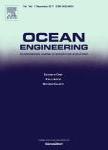版权所有:内蒙古大学图书馆 技术提供:维普资讯• 智图
内蒙古自治区呼和浩特市赛罕区大学西街235号 邮编: 010021

作者机构:Grad Univ Adv Technol Kerman Dept Civil Engn Kerman Iran
出 版 物:《OCEAN ENGINEERING》 (海洋工程)
年 卷 期:2015年第99卷
页 面:85-94页
核心收录:
学科分类:07[理学] 0707[理学-海洋科学] 0824[工学-船舶与海洋工程] 0814[工学-土木工程]
主 题:Clear water Evolutionary algorithms Neuro-fuzzy group method of data handling Scour depth Pile groups
摘 要:In this paper, neuro-fuzzy based group method of data handling (NF-GMDH) as an adaptive learning network was utilized to predict the local scour depth at pile groups under clear-water conditions. The NF-GMDH network was developed using particle swarm optimization (PSO) and gravitational search algorithm (GSA). Effective parameters on the scour depth include bed sediment size, geometric properties, piles spacing, arrangements of pile group, and flow characteristics in upstream of group piles and critical flow condition due to initiation of particles motion on bed surface. Nine dimensional parameters were considered to define a functional relationship between input and output variables. The NF-GMDH models were carried out using datasets collected from the literature. The efficiency of training stages for both NF-GMDH-PSO and NF-GMDH-GSA models was investigated. Testing results for the NF-GMDH networks were compared with the empirical equations. The NF-GMDH-PSO network produced more efficient performance (R=0.95 and RMSE=0.035) for scour depth prediction compared with the NF-GMDH-GSA model (R=0.94 and RMSE=0.036). The NF-GMDH models indicated quite higher accuracy of scour prediction, compared with the empirical equations (R=0.44 and RMSE = 0.127). Also, the sensitivity analysis indicated that pier diameter was the most significant parameter on scour depth. (C) 2015 Elsevier Ltd. All rights reserved.